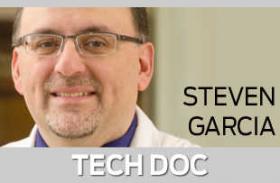 By Dr. Steven Garcia | For A-J Media
By Dr. Steven Garcia | For A-J MediaIt is hard to believe, but it is predicted on current trends that 40 percent of the American population will be morbidly obese by 2025. Currently, one out of three Americans are considered obese, and the gap is closing as more and more people fall into the obese category.
In 1991, the National Institute of Health defined obesity as a body mass index (BMI) of greater than 35 with co-morbidities related to obesity or a BMI greater than 40. BMI is calculated by taking your weight in pounds and dividing it by your height in inches squared.
How did we get here?
According to an August 2004 article by Cathy Newman, a senior writer for National Geographic for the last 25 years, most people are living a more sedentary lifestyle with more hours at work and less time for proper nutrition and exercise. “Americans enjoy one of the most luxurious lifestyles on Earth: Our food is plentiful. Our work is automated. Our leisure is effortless. And it’s killing us.”
Although most Americans are staying away from high-fat foods, they tend to gravitate to high-carbohydrate foods, which still have more calories and stored fat. The government currently recommends 1,600 calories for the average sedentary female and 2,200 for the average sedentary male. The trend is for most people to eat 3,000 calories a day with a reserve of 1,000 to 1,500 calories a day. By the end of the week, that is more than 3,500 reserve calories. The extra calories equal one pound a week. Multiply that by four weeks and then 12 months, and you can see how someone suddenly can add an extra 48 pounds in a year without realizing it.
What can be done?
Data currently indicates that diet and exercise are at the bottom of the list of options for effective weight loss. That is not to say they are not important. They are an integral part of a healthy lifestyle. However, once you get to a certain weight, it takes more than diet and exercise alone. Most obese people are limited to activity because of other health issues and often get discouraged by the “yo-yo” effect from losing weight and gaining it back after a diet. Most studies show that the most a person can lose from diet and exercise alone is around 10 percent of his or her excess body weight.
So, what are the options?
When is surgery the only effective means for weight loss? An effective weight-loss procedure is defined as one that yields a loss greater than 50 percent of excess body weight, including all options like diet and exercise to achieve such results.
Since the introduction of laparoscopic surgery in the late 1980s and with improved technology, surgical procedures for weight loss can now be safely performed via the laparoscopic approach. That means making incisions that are each less than half an inch in length and placing a camera to visualize the area to be operated on with small instruments.
There are multiple advantages for this approach. These include a shorter hospital stay, decreased post-operative pain, decreased wound-infection rates and quicker return to activities. Procedures that are available include the laparoscopic adjustable band, laparoscopic sleeve gastrectomy, laparoscopic gastric bypass and the bilio-pancreatic diversion. All have pros and cons and should be discussed with a bariatric surgeon to determine which surgery would be best suited for each individual.
STEVEN GARCIA M.D., IS THE MEDICAL DIRECTOR OF BARIATRICS AT TEXAS TECH PHYSICIANS — SURGERY.
